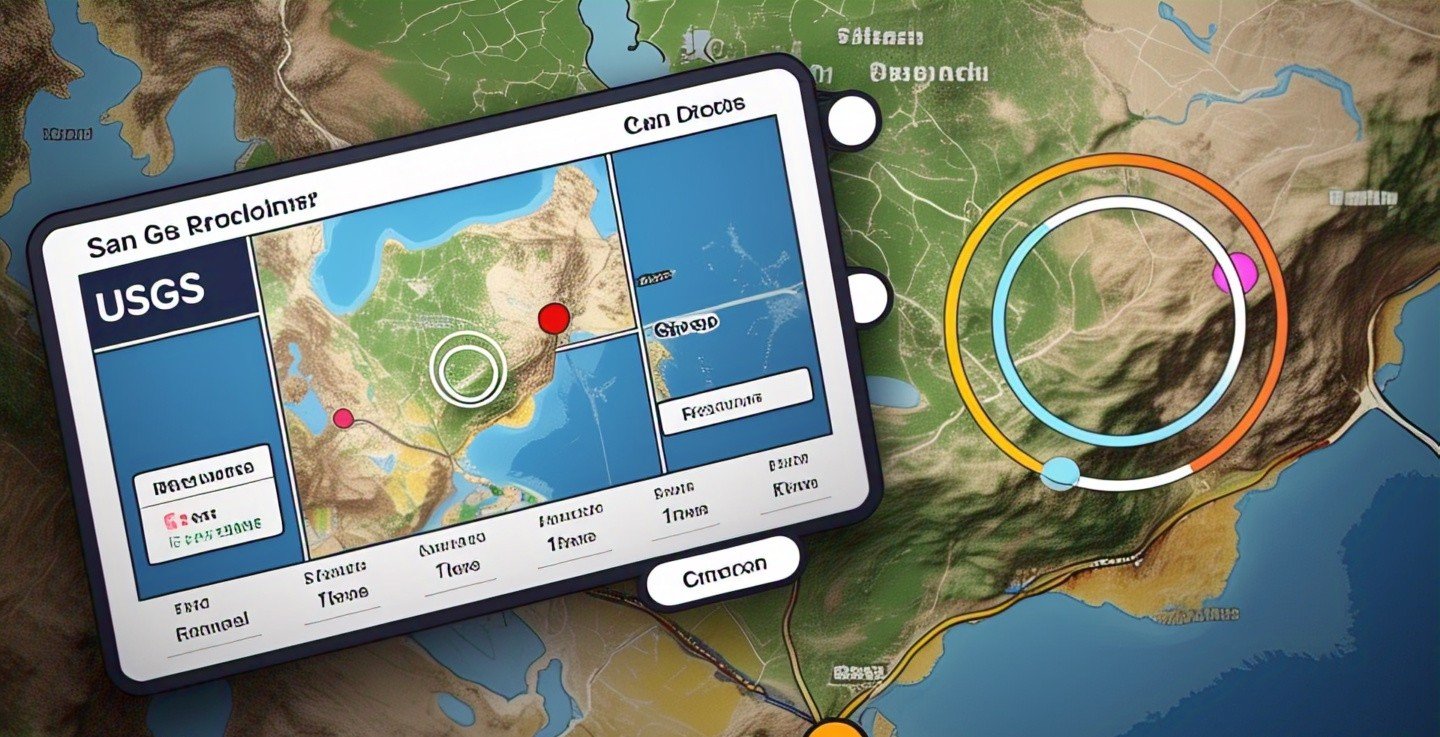San Diego Earthquake shakes Southern California with 5.1 magnitude! Get USGS updates, today’s alerts, and epicenter details. Stay informed now!
Introduction: San Diego Earthquake Strikes Again
On April 14, 2025, at approximately 3:45 PM local time, a powerful San Diego earthquake measuring 5.1 on the Richter scale shook Southern California, startling residents and tourists alike. According to USGS earthquake data, the epicenter was located just outside Julian, CA, a region already known for seismic activity. This earthquake today not only disrupted normal life but also triggered widespread discussion about earthquake preparedness across the region.
The tremor reverberated throughout San Diego County, with cities like Ramona, Chula Vista, and even parts of Los Angeles experiencing noticeable shakes. Online platforms were immediately flooded with queries like “earthquake near me” and “earthquake in San Diego today” as panic swept through digital corridors.
Although no major damage has been reported so far, the quake caused brief power outages and minor structural impacts. The event highlighted how even moderate earthquakes in California can ignite fear due to the potential for aftershocks and underlying fault-line vulnerabilities. According to local authorities, more than 20 aftershocks were felt within 12 hours, prompting alerts and precautions across Southern California.
This California earthquake serves as a stark reminder of the Golden State’s ongoing seismic risks and has reignited conversations about fault lines, infrastructure resilience, and emergency preparedness. With multiple agencies like USGS and Cal OES issuing updates, this earthquake is being closely monitored.
Earthquake Today: Timeline of Events and Public Reaction
At 3:45 PM PST, the 5.1 magnitude earthquake today shook San Diego and surrounding areas. Residents described hearing a low rumble before feeling walls sway and items fall from shelves. The US Geological Survey (USGS) quickly updated its earthquake tracker with precise data: a depth of 9 km, cantered near Julian, California.
The tremor was followed by aftershocks measuring between 2.1 and 3.5 magnitudes. Emergency lines were flooded with calls, though authorities assured the public that no fatalities or critical injuries occurred. The earthquake epicenter map revealed how the shockwaves radiated outward, reaching coastal cities and inland valleys alike.
Social media users shared videos from homes, office buildings, and the streets, with hashtags like #SanDiegoEarthquake and #CaliforniaQuake trending. One of the most touching videos came from NBC San Diego, showing elephants at the San Diego Zoo Safari Park forming a protective circle during the quake. Experts suggest animals often detect seismic activity before humans do.
- Read more about Earth’s changing landscape in our article on how volcanic eruptions shape the Earth.
San Diego Earthquake Today: Location, Damage, and Impact
The San Diego earthquake today had its epicenter near Julian, CA. It was felt as far north as Los Angeles and as far south as Tijuana, Mexico. San Diego County Estates and Chula Vista reported the strongest tremors. The quake impacted local transit systems, with temporary halts in trolley services and brief closures of Highway 78.
Schools in the affected areas conducted emergency drills, and some businesses evacuated employees as a precaution. The San Diego Fire Department responded to multiple alarm triggers and minor gas leaks. Utility companies dispatched crews to assess grid impacts.
While infrastructure held strong, the psychological impact was significant. Parents rushed to pick up children from schools, and stores saw spikes in emergency supply purchases. This quake serves as a wake-up call for earthquake preparedness in a state prone to seismic activity.
- Also read how global phenomena like global warming impact geography and economy.

California Earthquake: Geological Perspective
The California earthquake zone is among the most active in the world due to the San Andreas Fault. According to CBS News, this recent quake is part of a growing trend of moderate seismic activity in Southern California. Geologists point out that such quakes release built-up stress and could prevent larger ones, although the possibility of a major quake remains.
Past notable earthquakes—such as the Northridge quake of 1994—have led to revised building codes and preparedness campaigns. Still, with population growth and urban sprawl, even minor earthquakes can have amplified consequences today. Experts are now watching the Elsinore and Rose Canyon Fault Lines, which have historically impacted the San Diego region.
The USGS recommends that residents download earthquake alert apps, maintain emergency kits, and secure heavy furniture. With recent earthquakes in California increasing in frequency, the need for public awareness has never been greater.
- For more on social awareness and citizen movements, explore the Hands Off Protest 2025.
USGS Earthquake Monitoring: The Backbone of Safety
The USGS earthquake network plays a vital role in earthquake tracking and risk mitigation. Within minutes of the quake, the USGS app and website updated the location, magnitude, and depth, triggering emergency alerts in Southern California and beyond.
Their real-time tools such as the “Did You Feel It?” reporting system help gather public data to improve earthquake models. In the wake of this San Diego earthquake, the USGS has deployed field teams to monitor aftershock zones, particularly around Julian and Ramona.
They also confirmed the tremor was not linked to volcanic activity, although they are analyzing nearby faults for possible stress accumulation. The reliability of USGS earthquakes today data underscores its importance for planning and response.
FAQs – San Diego Earthquake
1. What caused the San Diego earthquake?
The San Diego earthquake occurred due to tectonic movements along the Elsinore Fault. These faults accumulate stress over time, and sudden releases cause earthquakes. In this case, pressure built up near Julian, CA, resulting in a 5.1 magnitude tremor. While this quake is considered moderate, its shallow depth and proximity to urban areas caused noticeable shaking. Geologists emphasize the importance of readiness as more such events are expected due to fault activity.
2. How does the USGS track earthquake today events?
The earthquake today data is tracked using a combination of seismic sensors, satellites, and AI-powered analytics. The USGS updates data in real-time, including epicenter location, magnitude, depth, and affected zones. Their tools help emergency services react quickly and allow the public to receive timely alerts. Earthquake tracking apps connected to USGS are a recommended resource for Californians.
3. What regions were affected by the California earthquake?
The California earthquake was felt across San Diego, Los Angeles, and parts of Riverside and Orange Counties. Julian, Ramona, and Chula Vista were closest to the epicenter. The tremor even reached the San Diego Zoo and Palm Springs, highlighting the wide impact zone. Despite the quake’s modest magnitude, local authorities took swift action to ensure public safety.
4. Was there any major damage in the earthquake San Diego today?
Fortunately, the earthquake San Diego today caused no critical damage or casualties. However, there were reports of minor cracks in walls, power outages, and gas leaks. Emergency drills were triggered across schools and offices. While San Diego is earthquake-prepared, this incident stressed the need for constant vigilance and improved structural safety.
5. What role does the USGS earthquake network play in public safety?
The USGS earthquake network is essential for early detection and accurate reporting. With its vast array of sensors and scientific tools, the network provides real-time updates that help local authorities issue warnings and organize responses. Their data helps engineers design quake-resistant buildings and supports ongoing geological research into fault line behavior.

Conclusion
The recent San Diego earthquake is a timely reminder of the seismic risks that loom over California. With accurate tracking by the USGS earthquake system, quick public alerts, and proactive emergency services, the region managed to avert disaster. But preparedness remains key. Whether it’s installing alert apps, participating in drills, or staying updated with news from sources like ABC7 and CBS News, staying informed saves lives.
As earthquakes today become more frequent in seismic zones, this event underscores the need for resilient infrastructure and public education. Californians must treat each tremor as a learning opportunity to better prepare for the next.
Final Take Away:
- 5.1 magnitude earthquake struck San Diego on April 14, 2025
- Epicenter near Julian, CA, at 9 km depth
- Felt across Southern California including Los Angeles and Chula Vista
- No major damage or fatalities reported
- USGS and emergency services responded quickly
- Viral footage showed animal reactions at San Diego Zoo
- Public urged to stay prepared and alert for aftershocks
- Increased awareness of Southern California’s fault lines
- Earthquake apps and emergency kits recommended for all residents
- Recent trends suggest growing seismic activity in California
🌍 Stay ahead of nature’s surprises. Sign up for real-time earthquake or San Diego earthquake alerts, educate your family on safety protocols, and keep your emergency kits updated. Share this article to spread awareness — because staying informed is the first step toward staying safe.
Drop your thoughts in the comments below!
Follow us on social media for more updates:
Sources Referenced:
- ABC7 News – Reported the exact magnitude (5.1) and the time/location of the San Diego earthquake on April 14, 2025. It also provided USGS confirmations and resident reactions.
- CBS News – Contextualized this earthquake with past major Southern California quakes, offering geological insights and comparisons.
- NBC San Diego – Shared a viral video from the San Diego Zoo Safari Park showing elephants reacting during the earthquake, giving a unique perspective on how animals sense seismic shifts.
📢📢 Unlock Your Online Potential with Hostinger!
Struggling with Social Media addiction? To know about The Dark Side of Social Media 👉 Click Here
💻 Turn your screen time into income by creating a money-making website! With Hostinger’s affordable hosting, you can:
- ✅ Build a blog, e-commerce store, or portfolio in minutes
- ✅ Monetize through ads, affiliate marketing, or digital products
- ✅ Enjoy lightning-fast speed & 99.9% uptime
🎁 Exclusive 20% OFF for our readers:
👉 Hostinger Affiliate Link
Why Hostinger?
- ✔ 1-click WordPress install (perfect for beginners!)
- ✔ 24/7 live chat support
- ✔ Free SSL certificate (secure your site)
🌟 Example Success:
Riya, a former Social Media addict, now earns $750 /month from her self-care blog—built on Hostinger in just 2 days!
Your Turn:
- 1️⃣ Sign up with our link
- 2️⃣ Launch your site (use detox tips as content!)
- 3️⃣ Start earning while helping others break free!
💡 “Your phone is a goldmine—stop scrolling, start selling!”
Affiliate Disclosure: This page contains affiliate links. We may earn a commission at no extra cost to you.

